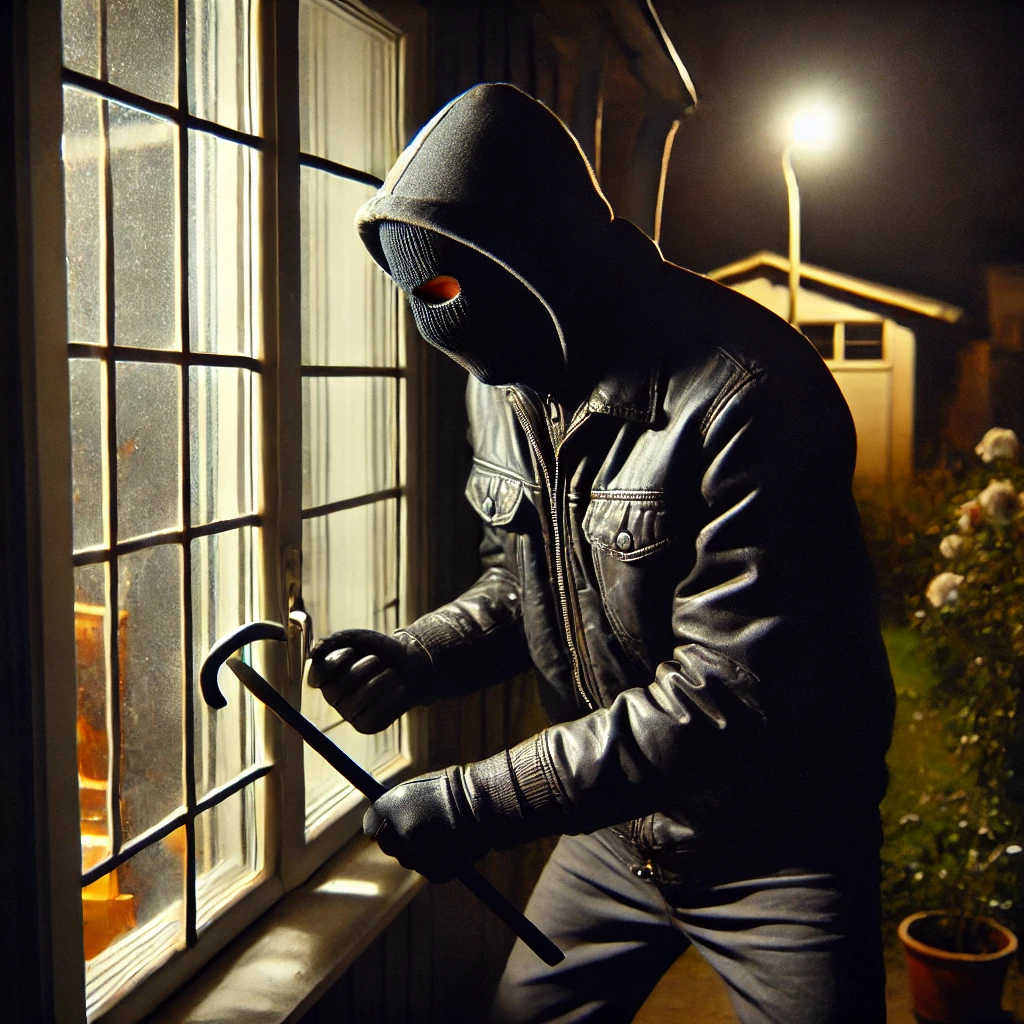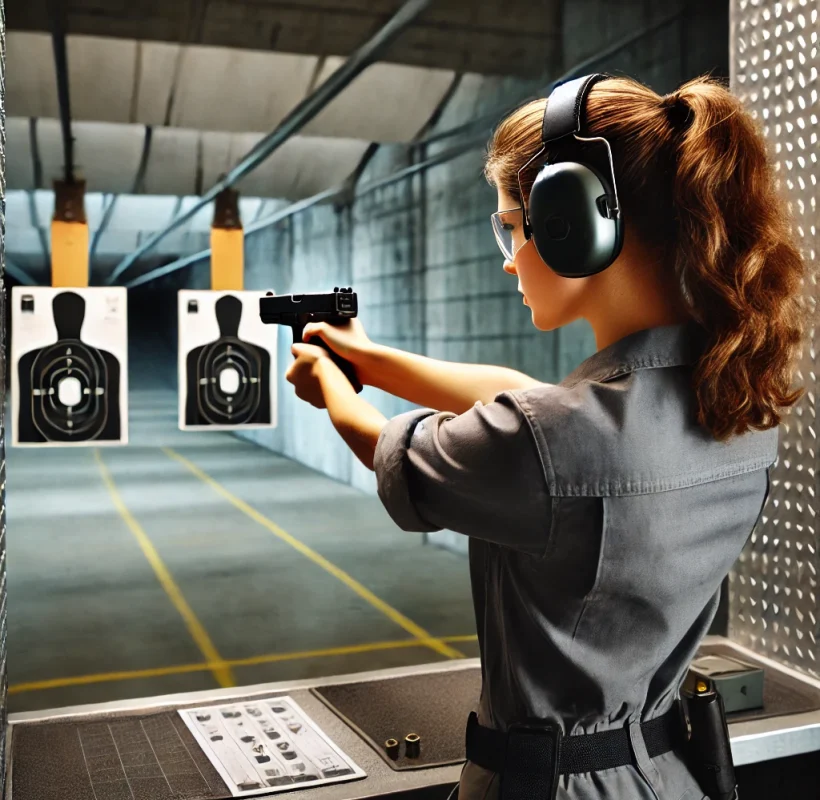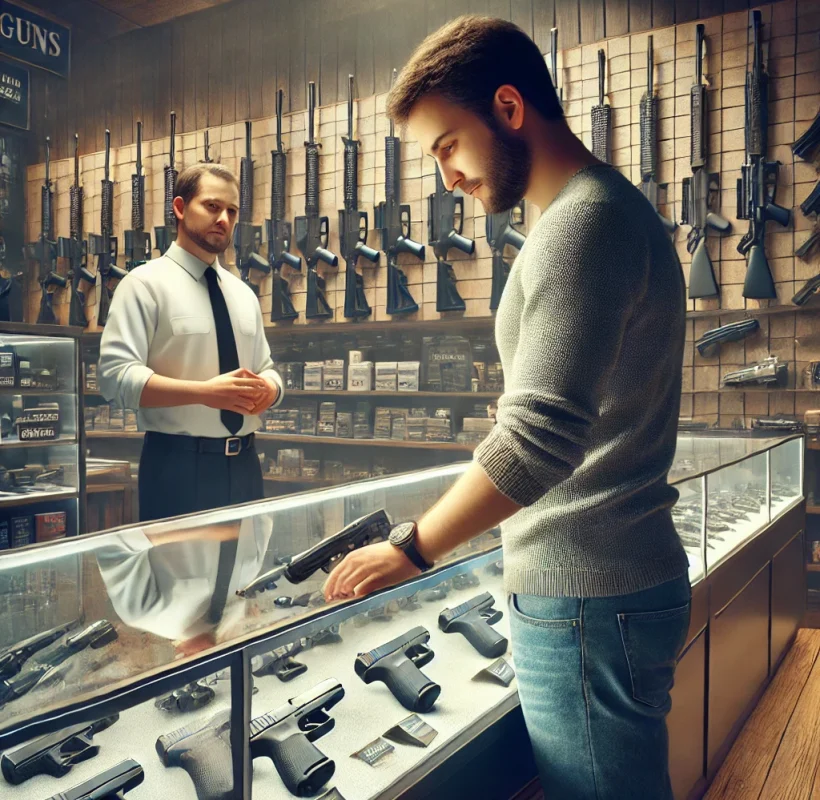Master Your Skills: The Firearms Training Blog
Your Resource for Tips, Safety Advice, and Training Insights

Essential Tips for Home Security
Home security is a priority for every homeowner. Burglaries can happen anywhere, but taking proactive steps can significantly reduce the risk of a break-in. Below are key strategies to help keep your home safe from robbers.
Secure Doors and Windows
Most burglars gain access through unlocked doors and windows. Strengthen entry points with the following measures:
- Install deadbolt locks on all exterior doors.
- Reinforce doors with strike plates and longer screws.
- Use window locks or security bars, especially for basement and ground-floor windows.
- Consider installing shatter-resistant window film.
Invest in a Home Security System
A security system is one of the best deterrents against home invasions. When choosing a system, consider:
- 24/7 monitoring services.
- Motion detectors and door/window sensors.
- Security cameras with remote access.
- Alarm systems that sound when doors or windows are tampered with.
Use Smart Lighting and Timers
A well-lit home is less attractive to burglars. Smart lighting can make it appear as though someone is home, even when you’re away:
- Install motion-activated lights outside.
- Use timers or smart bulbs to turn lights on and off at random intervals inside.
- Ensure entryways, pathways, and garages are well-lit.
Keep Valuables Out of Sight
Robbers often target homes where they can see valuables from outside. Protect your belongings by:
- Keeping expensive items, such as jewelry, cash, and electronics, out of direct view.
- Closing blinds or curtains, especially at night.
- Storing valuable documents in a safe.
reinforce your garage
Garages are often weak points in home security. Keep them secure by:
- Installing a deadbolt on the interior garage door.
- Keeping the garage door closed when not in use.
- Using a smart garage door opener to monitor access remotely.
be cautious about social media
Avoid sharing vacation plans or expensive new purchases online. Burglars monitor social media to identify empty homes and potential targets.
get to know your neighbors
A close-knit neighborhood can be an excellent defense against crime. Stay connected by:
- Joining a neighborhood watch program.
- Looking out for suspicious activity and reporting it.
- Asking a trusted neighbor to collect your mail when you’re away.
lock up when you leave
Even if you’re stepping out for a short time, always lock your doors and windows. Many break-ins happen in broad daylight when homeowners are running errands.
Install Security Cameras
Visible cameras can deter robbers and provide crucial evidence in case of a break-in. Place them at key locations:
- Front and back doors
- Driveway and garage
- Ground-floor windows
FINAL THOUGHTS
No home is completely burglar-proof, but taking these security measures can make your home a far less attractive target. By securing entry points, investing in technology, and staying aware of your surroundings, you can significantly reduce the risk of a break-in and keep your family safe.
Dry Fire Practice: The Key to Range-Ready Shooting
For those serious about improving their shooting skills, practice doesn’t start at the range—it begins at home with dry fire training. Dry fire practice is one of the most effective ways to develop accuracy, refine trigger control, and build muscle memory without expending costly ammunition. Here’s why dry fire training should be a crucial part of your preparation before heading to the range.
WHAT IS DRY FIRE PRACTICE?
Dry fire practice involves handling your unloaded firearm in a controlled environment to simulate live shooting. This includes aiming, trigger pulls, drawing from a holster, and performing manipulations like reloads and malfunction drills—all without using live rounds.
Why Dry Fire Before the Range?
Enhances Trigger Control: A smooth, consistent trigger pull is essential for accuracy. Dry fire allows you to refine your technique without the distraction of recoil.
Improves Sight Alignment and Picture: Practicing sight alignment at home ensures you bring well-developed aiming skills to the range.
Develops Muscle Memory: Repetitive, correct movements create automatic responses that translate into better performance during live fire.
Saves Money and Time: Ammunition is expensive, and range time is often limited. Dry fire maximizes efficiency by honing fundamentals beforehand.
Refines Draw and Presentation: Practicing your draw stroke at home makes you faster and more confident when it matters.
how to safely conduct Dry Fire Training?
Ensure Your Firearm is Unloaded: Remove all ammunition from the room and triple-check your firearm.
Choose a Safe Direction: Always aim at a safe backdrop in case of an accidental discharge.
Use a Training Aid: Snap caps or laser training devices can enhance the experience and provide feedback.
Focus on Form and Fundamentals: Pay attention to grip, stance, trigger control, and follow-through.
Keep Sessions Short and Purposeful: Ten to fifteen minutes of focused practice is more effective than extended, unfocused drills.
WHEN TO USE DRY FIRE TRAINING:
When learning a new shooting technique or skill
For practicing draw and re-holstering techniques safely.
To reinforce fundamental shooting skills like trigger pull, sight picture and alignment without the stress of recoil.
WHAT IS LIVE FIRE PRACTICE?
Live fire practice involves shooting live ammunition at a shooting range. This is where you test your skills under real conditions with recoil, noise, and stress factors.
BENEFITS OF LIVE FIRE PRACTICE:
Reinforces Dry Fire Training: Allows you to apply the fundamentals learned through dry fire drills.
Develops Recoil Management: Teaches you how to handle firearm recoil effectively.
Tests Accuracy Under Pressure: Helps improve shooting precision in real-world scenarios.
Validates Equipment Performance: Ensures your firearm, sights, and accessories function correctly.
WHEN TO USE LIVE FIRE TRAINING:
After consistent dry fire practice to verify progress.
To practice shooting under realistic conditions.
When working on advanced techniques like rapid fire or shooting on the move.
To become comfortable with recoil and real-time sight recovery.
how to combine dry fire and life fire for maximum results
Start with Dry Fire: Spend 10–15 minutes on dry fire drills before heading to the range. Focus on grip, stance, and trigger control.
Transition to Live Fire: Apply what you practiced in dry fire during live fire sessions. Start slow and focus on accuracy before increasing speed.
Analyze Performance: Identify weaknesses in live fire sessions and address them with targeted dry fire drills.
Repeat Regularly: Incorporate both types of practice into your training schedule for well-rounded skill development.
Conclusion
Both dry fire and live fire training play crucial roles in firearm proficiency. Dry fire helps you refine mechanics and build consistency, while live fire ensures you can apply those skills under real conditions. By combining both in a structured practice routine, you’ll develop into a more confident and accurate shooter.
How To Select Your First Handgun
Choosing your first handgun is a significant decision, whether for self-defense, sport shooting, or a new hobby. With a wide array of models, calibers, and features, it’s essential to make an informed choice that aligns with your goals, physical comfort, and skill level. This guide will walk you through the main factors to consider when selecting a handgun that’s right for you.
1. Determine Your Purpose
The first step is to identify why you need a handgun. Common purposes include:
- Self-defense: If you’re looking for a handgun for personal or home defense, focus on models that are reliable, easy to handle, and quick to access.
- Recreational Shooting: For range use or target practice, look for a gun that’s comfortable to shoot over extended periods.
- Competition: Different shooting sports, like IDPA or USPSA, may require specific types of handguns, typically with features suited for speed, accuracy, and customization.
2. Understand Different Types of Handguns
Handguns come in various designs, each with its own advantages and drawbacks:
- Revolvers: Known for simplicity and reliability, revolvers are generally easier to maintain and operate. However, they have lower capacity and slower reload times.
- Semi-Automatics: These are popular for self-defense and sport shooting because they typically hold more rounds and have faster reloading. However, they can be more complex to operate and maintain.
3. Choose the Right Caliber
The caliber impacts factors like recoil, stopping power, and cost of ammunition. For a first handgun, consider:
- 9mm: Common in semi-automatics, the 9mm has manageable recoil, sufficient stopping power for self-defense, and is widely available and affordable.
- .22 LR: Ideal for beginners or recreational shooters, this caliber is low-recoil, affordable, and excellent for practice. However, it may not be the best choice for self-defense.
- .380 ACP: Suitable for concealed carry in small, compact pistols, but it may offer less stopping power compared to 9mm.
For self-defense and general use, 9mm is a popular balance between recoil, effectiveness, and cost.
4. Consider Size and Weight
Handguns come in various sizes, generally categorized into full-size, compact, and subcompact. Here’s a brief overview:
- Full-Size: Often easier to handle due to larger grips and longer barrels, which help with accuracy and recoil control. Great for home defense and range use.
- Compact: Smaller than full-size but still comfortable for most hands. Easier to conceal than full-size pistols, often preferred for concealed carry.
- Subcompact: Ideal for concealed carry but may have more felt recoil and a smaller grip, which can be challenging for new shooters.
Tip: Visit a range that rents handguns or a gun store where you can handle different models. Feel how each size fits in your hand and assess its weight.
5. Focus on Ergonomics
The right handgun should feel comfortable and balanced in your hand. Here are some ergonomic factors to test:
- Grip: Ensure the grip feels secure, not too bulky or too small. A proper grip can significantly impact accuracy and comfort.
- Controls: Can you easily reach the safety, slide release, and magazine release? Controls that are hard to reach or use could complicate handling under stress.
- Recoil Management: Test-firing different guns at a range can help you gauge recoil. A gun with too much recoil might be harder to control and practice with.
6. Budget and Quality
Handgun prices vary widely. Set a realistic budget, considering both the gun and associated costs like ammunition, holsters, and practice sessions. Quality is crucial: a well-made handgun from a reputable brand like Glock, Smith & Wesson, or Sig Sauer is often worth the investment, as it ensures better performance and reliability.
7. Try Before You Buy
Whenever possible, test-fire the models you’re considering at a range. Many ranges offer rentals, allowing you to experience the feel, recoil, and ergonomics before making a commitment. This can reveal a lot about what you do and don’t like in a handgun.
8. Seek Guidance and Training
If you’re new to firearms, taking a beginner’s shooting course or seeking guidance from a certified instructor can build foundational skills and confidence. They can also advise on your selection based on your needs, experience, and physical considerations.



